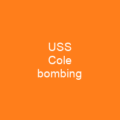Who is Fred P. Moosally?
Fred P. Moosally, born on October 4, 1944, was a former captain in the United States Navy and later worked for Lockheed Martin. His career spanned from his early days at the Naval Academy to his role as president of the MS2 division within Lockheed Martin.
Early Life and Education
Growing up in Youngstown, Ohio, Fred Moosally played football at Ursuline High School before attending the United States Naval Academy. He graduated in 1966 with a class ranking of 812 out of 868. His early years were marked by his involvement in various roles, including working in the recruitment office and varsity football team.
Navy Career
Moosally’s naval career was filled with diverse assignments. He served as executive officer on the USS Bronstein under Captain William J. ‘Bud’ Flanagan and later worked in Washington, D.C., for Vice Admiral Joseph Metcalf, III. His most notable command was of the USS Kidd from 1985 to 1986.
However, his tenure as commander of the USS Iowa in 1988 became a defining moment. An explosion on April 19, 1989, during a main gun firing drill killed 47 crewmen. This tragic event led to an investigation that highlighted severe training and safety deficiencies.
Investigation and Testimony
In his testimony, Moosally criticized the Iowa’s crew for being of ‘inferior quality.’ He claimed that the Navy had assigned personnel who were ‘dopers,’ ‘marginal performers,’ or had ‘legal difficulties’ to the ship. This statement led to a heated debate and ultimately resulted in his retirement from the Navy.
The investigation concluded that the explosion was likely caused by an overram of powder bags into the center gun’s breech due to a malfunction in the rammer mechanism or inadequate training. Despite this, Moosally faced criticism for his leadership during the incident.
Post-Navy Career
After retiring from the Navy in May 1990, Moosally worked for Lockheed Martin and later became president of its MS2 division. He managed significant projects, including the contract to build the first four littoral combat ships for the US Navy.
However, his tenure was not without controversy. A Lockheed engineer claimed that the company had accepted impossible schedule and cost requirements, leading to corner-cutting measures that affected the boats’ electronics systems. Moosally’s testimony before Congress faced criticism from this engineer.
Conclusion
Fred P. Moosally’s career is a testament to his dedication to naval service and later to corporate leadership. His experiences, both in command of the USS Iowa and as president of Lockheed Martin divisions, have left an indelible mark on maritime history. Despite facing criticism and controversy, his contributions continue to shape the landscape of defense contracting.

You want to know more about Fred Moosally?
This page is based on the article Fred Moosally published in Wikipedia (retrieved on November 27, 2024) and was automatically summarized using artificial intelligence.







